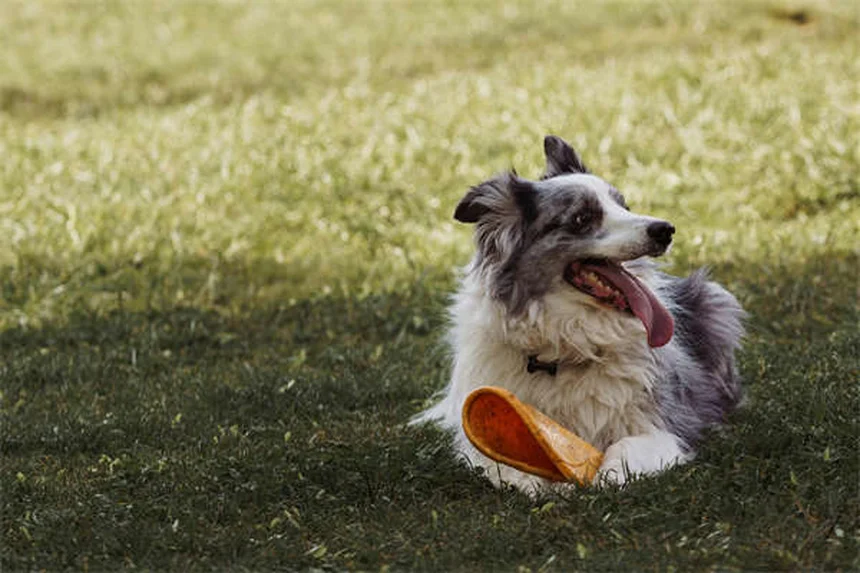What's the best puppy food for your growing dog? The answer is: high-quality commercial puppy food specifically formulated for your pup's size and breed! We've tested dozens of options and consulted with veterinary nutritionists to bring you the most reliable picks that'll give your furry friend the perfect start in life.As a dog owner myself, I know how overwhelming it can be to navigate the puppy food aisle. You're probably wondering: Should I go grain-free? How much protein does my pup need? What about large breed formulas? Don't worry - we've got you covered with simple, practical advice you can trust.The truth is, your puppy's first year of nutrition sets the foundation for their lifelong health. That's why we're breaking down exactly what to look for (and what to avoid) when choosing between all those colorful bags at the pet store. From ingredient quality to portion sizes, we'll walk you through everything you need to know to make the best choice for your four-legged family member.
E.g. :Why Do Dogs Pant? 5 Key Reasons & When to Worry
- 1、Puppy Nutrition 101: Fueling Your Furry Friend's Growth
- 2、Decoding Puppy Food Labels
- 3、Feeding Time Strategies
- 4、Common Puppy Feeding Mistakes
- 5、When to Call the Vet
- 6、Budget-Friendly Puppy Nutrition
- 7、Puppy Feeding Equipment Essentials
- 8、Special Circumstances
- 9、The Science Behind Puppy Growth Spurts
- 10、The Social Aspect of Puppy Feeding
- 11、Environmental Factors in Puppy Nutrition
- 12、The Psychology of Puppy Eating Habits
- 13、Technology in Puppy Nutrition
- 14、Cultural Differences in Puppy Feeding
- 15、The Future of Puppy Nutrition
- 16、FAQs
Puppy Nutrition 101: Fueling Your Furry Friend's Growth
The Puppy Food Advantage
Ever wonder why pet stores have entire aisles dedicated to puppy food? Growing pups need 2-3 times more calories per pound than adult dogs! Their little bodies are building bones, muscles, and brains at lightning speed.
Here's what makes puppy food special:
- Higher protein content (minimum 22% vs. 18% for adults)
- Extra fat for energy (8-20% range)
- Precise calcium/phosphorus ratios for bone development
- Smaller kibble size for those baby teeth
Size Matters: Choosing By Breed
Did you know a Great Dane puppy and a Chihuahua puppy have completely different nutritional needs? Let's break it down:
| Breed Size | Adult Weight | Special Needs | Transition Age |
|---|---|---|---|
| Small/Toy | Under 20 lbs | Dense calories | 9-12 months |
| Medium | 20-50 lbs | Balanced growth | 12 months |
| Large | 50-100 lbs | Joint support | 12-18 months |
| Giant | 100+ lbs | Slow growth formula | 18-24 months |
Decoding Puppy Food Labels
 Photos provided by pixabay
Photos provided by pixabay
Ingredient Detective Work
When scanning that ingredient list, remember: the first 5 ingredients make up about 80% of the food. Look for:
Real meat as #1 ingredient - chicken, beef, lamb or fish should lead the list. None of that vague "meat meal" nonsense!
Whole grains like brown rice or oatmeal - despite the grain-free trend, most pups actually benefit from digestible carbs. Recent studies show grain-free diets might be linked to heart issues in some breeds.
Special Formulas: Worth the Hype?
You'll see puppy foods marketed for specific breeds or needs. Here's the real scoop:
Breed-specific formulas can be helpful for:
- Dachshunds - added glucosamine for long spines
- Labradors - weight management blends
- Poodles - skin and coat boosters
But guess what? A quality all-breed puppy food often works just fine. Save your money unless your vet recommends otherwise!
Feeding Time Strategies
Portion Control Pitfalls
Here's a shocking fact: over 50% of puppies are overweight by their first birthday! Those pleading puppy eyes trick us every time.
Follow the package guidelines, but adjust based on:
- Activity level (couch potato vs. park warrior)
- Body condition (you should feel ribs but not see them)
- Growth spurts (they'll eat like tiny wolves sometimes!)
 Photos provided by pixabay
Photos provided by pixabay
Ingredient Detective Work
Switching foods? Do it gradually over 7-10 days to avoid tummy troubles. Here's my foolproof schedule:
Days 1-2: 25% new food + 75% old
Days 3-4: 50/50 split
Days 5-7: 75% new + 25% old
Day 8+: 100% new
Pro tip: Add a spoonful of plain pumpkin if stools get loose during transition.
Common Puppy Feeding Mistakes
The "People Food" Trap
We've all been there - that face! But human food can:
- Upset nutritional balance
- Create picky eaters
- Cause dangerous weight gain
Instead of table scraps, try these healthy alternatives:
Frozen blueberries (great teething relief!)
Baby carrots (crunchy and low-cal)
Plain cooked chicken (no seasoning!)
Water: The Forgotten Nutrient
Did you know puppies can dehydrate faster than adults? Always provide:
Fresh, clean water available 24/7
Extra bowls if you have a large house
Non-tip bowls for clumsy pups
Check water intake - about 1/2 to 1 ounce per pound daily is normal.
When to Call the Vet
 Photos provided by pixabay
Photos provided by pixabay
Ingredient Detective Work
Most feeding issues resolve on their own, but watch for:
Consistent refusal to eat for >24 hours
Repeated vomiting or diarrhea
Sudden changes in water consumption
Lethargy after eating
Remember: It's always better to call early than wait too long!
The Supplement Question
With all those ads for puppy supplements, how do you know what's legit?
Good rule of thumb: If you're feeding quality puppy food, supplements usually aren't needed. Exceptions might include:
- Probiotics after antibiotics
- Joint support for large breeds
- Special formulas for medical conditions
Always consult your vet before adding anything to your pup's diet.
Budget-Friendly Puppy Nutrition
Getting More Kibble for Your Dollar
Puppy food costs can add up fast! Try these money-saving tricks:
Buy in bulk (but check expiration dates)
Look for auto-ship discounts
Compare price per pound, not per bag
Consider store brands with good ingredients
But never sacrifice quality - vet bills from poor nutrition cost way more!
Homemade Options: Yay or Nay?
Thinking about cooking for your pup? Hold that thought!
Balancing homemade puppy diets requires:
Precise nutrient measurements
Veterinary nutritionist guidance
Lots of time and effort
For most owners, commercial foods are safer and more convenient. Save the cooking for special treats!
Puppy Feeding Equipment Essentials
Choosing the Right Bowl
Not all bowls are created equal! Consider:
Material: Stainless steel beats plastic (less bacteria, more durable)
Shape: Wide, shallow bowls prevent whisker fatigue
Stability: Non-slip bases prevent spills
Fun fact: Elevated feeders aren't necessary unless your pup has neck issues!
Slow Feeder Solutions
Does your puppy inhale food like a vacuum? Try:
Puzzle feeders (mental stimulation + slower eating)
Muffin tin method (spread kibble in the cups)
Food-dispensing toys (makes mealtime fun!)
Slower eating means better digestion and less bloating risk.
Special Circumstances
Picky Eaters: What Really Works
Got a princess who turns up her nose at dinner? Try these tricks:
Warm the food slightly (enhances smell)
Add low-sodium broth (just a teaspoon!)
Establish consistent meal times
Remove uneaten food after 20 minutes
Most pups won't starve themselves - they'll eat when hungry enough!
Food Allergies: Separating Fact from Fiction
True food allergies are rarer than you think. Common signs include:
Chronic ear infections
Persistent paw licking
Recurrent skin infections
GI issues
If you suspect allergies, work with your vet on an elimination diet - don't just guess!
The Science Behind Puppy Growth Spurts
Understanding Growth Patterns
Did you know puppies don't grow at a steady rate? They experience explosive growth spurts that'll make you swear they doubled in size overnight! During these periods, their nutritional needs change dramatically.
Here's what's happening inside that growing body:
- Bone development requires precise calcium levels
- Muscle growth demands high-quality protein
- Brain development needs DHA (found in fish oils)
- Energy requirements fluctuate daily
Timing Is Everything
When do these critical growth phases occur? Let me break it down for you:
| Age Range | Growth Focus | Nutritional Priority | Visible Changes |
|---|---|---|---|
| 8-12 weeks | Brain development | DHA & antioxidants | Improved coordination |
| 3-6 months | Bone lengthening | Calcium/phosphorus | "Lanky" appearance |
| 6-12 months | Muscle building | High-quality protein | Filling out |
| 12+ months | Final maturation | Balanced nutrition | Adult proportions |
The Social Aspect of Puppy Feeding
Mealtime Manners Matter
You might not realize it, but how you feed your puppy shapes their future behavior. Food-related aggression often starts with innocent mistakes during puppyhood.
Try these positive feeding practices:
Hand-feeding occasionally builds trust
Teaching "wait" before meals prevents rushing
Gentle petting during eating reduces food guarding
Rotating feeding locations prevents territorial behavior
The Pack Mentality Myth
Ever heard you should eat before your dog to "establish dominance"? That's outdated thinking! Modern trainers recommend:
Feeding puppies on a consistent schedule
Using meals as training opportunities
Making food time positive, not stressful
Ignoring the old "alpha dog" nonsense
Remember - your puppy isn't plotting to overthrow you at dinner time!
Environmental Factors in Puppy Nutrition
Climate Considerations
Would you believe weather affects your puppy's dietary needs? Hot summers and cold winters actually change how we should feed our pups!
In warmer months:
- Increase water availability
- Consider feeding during cooler hours
- Watch for decreased appetite
In colder months:
- Outdoor pups may need 10-15% more calories
- Warm broth can encourage drinking
- Monitor weight for seasonal fluctuations
Living Space Dynamics
Apartment vs. house with yard - does it matter for feeding? You bet!
Small space living often means:
Less spontaneous activity
Need for controlled portions
Importance of food puzzles for stimulation
Quicker weight gain if not monitored
Meanwhile, yard-access pups typically:
Burn more calories through play
May need extra meals or snacks
Benefit from scattered feeding (hide kibble in grass)
Require closer parasite prevention
The Psychology of Puppy Eating Habits
Food as More Than Nutrition
Here's something fascinating - puppies develop emotional connections to food experiences! Positive mealtimes create confident adult dogs.
How food impacts puppy psychology:
- Consistency builds security
- Variety prevents pickiness
- Food puzzles boost problem-solving skills
- Positive reinforcement with treats strengthens bonds
The Comfort Food Phenomenon
Just like humans, puppies can develop comfort eating behaviors. Watch for:
Eating when stressed or bored
Begging even when not hungry
Food obsession beyond normal puppy enthusiasm
Using food to cope with separation anxiety
Pro tip: If your puppy seems overly food-focused, increase mental stimulation through training and play!
Technology in Puppy Nutrition
Smart Feeding Gadgets
Welcome to the future of puppy feeding! Today's tech offers amazing solutions:
Automatic feeders with portion control
Slow-feed bowls with adjustable difficulty
Interactive food-dispensing cameras
Hydration monitors that alert your phone
But remember - no gadget replaces your loving attention during meal times!
Nutrition Tracking Apps
There's an app for that! Modern puppy parents can:
Log meals and treats effortlessly
Track growth against breed standards
Set reminders for feeding times
Share data directly with veterinarians
My favorite feature? The treat calculator that shows how many extra walks those cookies will require!
Cultural Differences in Puppy Feeding
Global Puppy Diet Variations
Ever wonder how puppies eat in other countries? Feeding practices vary wildly worldwide!
In Japan, it's common to see:
- Fish-based puppy foods
- Rice as a carbohydrate source
- Specialty seaweed supplements
Meanwhile in Australia:
- Kangaroo meat formulas
- Emphasis on natural, raw diets
- Bush tucker-inspired treats
American Feeding Trends
How does the U.S. compare? We've got some unique habits:
Extreme variety in commercial foods
Strong supplement industry
Humanization of pet food (gourmet trends)
Growing raw food movement
Fun fact: American pups consume more peanut butter-flavored treats than any other country!
The Future of Puppy Nutrition
Emerging Research Areas
Scientists are making exciting discoveries that will shape tomorrow's puppy foods:
Gut microbiome studies
Breed-specific nutrient requirements
Precision nutrition based on DNA
Sustainable protein alternatives
Can you imagine getting a custom puppy food formula based on your pup's genetic test results? The future is wild!
Sustainability Challenges
Here's a tough question: How do we feed growing puppy populations without wrecking the planet?
Innovative solutions in development:
- Insect-based proteins
- Lab-grown meat alternatives
- Upcycled ingredient foods
- Carbon-neutral production
The good news? Many puppy food companies already use sustainable practices - look for eco-certifications!
E.g. :What is the consensus on the best puppy food? : r/puppy101
FAQs
Q: How long should I feed my puppy puppy food?
A: The transition timeline depends entirely on your dog's expected adult size. Small breed puppies (under 20 lbs as adults) can typically switch to adult food around 9-12 months. Medium breeds (20-50 lbs) usually stay on puppy food until 12 months, while large breeds (50-100 lbs) need the specialized nutrition until 12-18 months. Giant breeds like Great Danes should stick with puppy formula until they're 18-24 months old. I always tell my clients to watch their pup's growth - when they reach about 80% of their anticipated adult size, it's time to start the transition. Remember, it's better to keep them on puppy food a little longer than to switch too early!
Q: Is grain-free puppy food safe?
A: Current veterinary research suggests avoiding grain-free diets for puppies. While the FDA is still investigating, there's concerning evidence linking grain-free foods to heart disease in some dogs. The issue isn't necessarily the lack of grains, but rather what's being used instead - ingredients like peas, lentils, and potatoes might interfere with nutrient absorption. Unless your vet specifically recommends grain-free for medical reasons, we suggest sticking with traditional puppy foods containing wholesome grains like brown rice or oatmeal. They're easier to digest and provide important nutrients for growing pups.
Q: How often should I feed my puppy each day?
A: Puppies need frequent small meals - their tiny tummies can't handle large portions all at once! Here's our recommended feeding schedule based on age: 8-12 weeks old: 4 meals daily; 3-6 months: 3 meals; 6-12 months: 2-3 meals. After their first birthday, most dogs do well with two meals per day. Of course, every pup is different - if yours seems hungry between meals or leaves food in the bowl, adjust accordingly. Pro tip: Use a slow feeder bowl if your puppy gulps food too quickly to prevent choking and improve digestion.
Q: What ingredients should I avoid in puppy food?
A: When scanning that ingredient list, watch out for these red flags: artificial colors (they're just for looks, not nutrition), unnamed meat sources ("meat meal" instead of "chicken meal"), excessive fillers (corn should never be the first ingredient), and artificial preservatives like BHA/BHT. Also be wary of foods that list "flavor" rather than actual protein sources. My golden rule? If you can't pronounce half the ingredients or don't recognize them as real food, put that bag back on the shelf. Your puppy deserves better!
Q: Can I make homemade food for my puppy?
A: While the idea of cooking for your pup sounds loving, we strongly recommend against homemade diets for growing puppies. Getting the precise balance of protein, fat, vitamins and minerals is incredibly difficult without professional guidance. One study found that over 95% of homemade puppy diets were nutritionally incomplete! If you're determined to prepare food at home, consult with a veterinary nutritionist who can create a balanced recipe specifically for your pup's needs. Otherwise, stick with commercial puppy foods that have undergone feeding trials - they're scientifically formulated to support healthy development.











